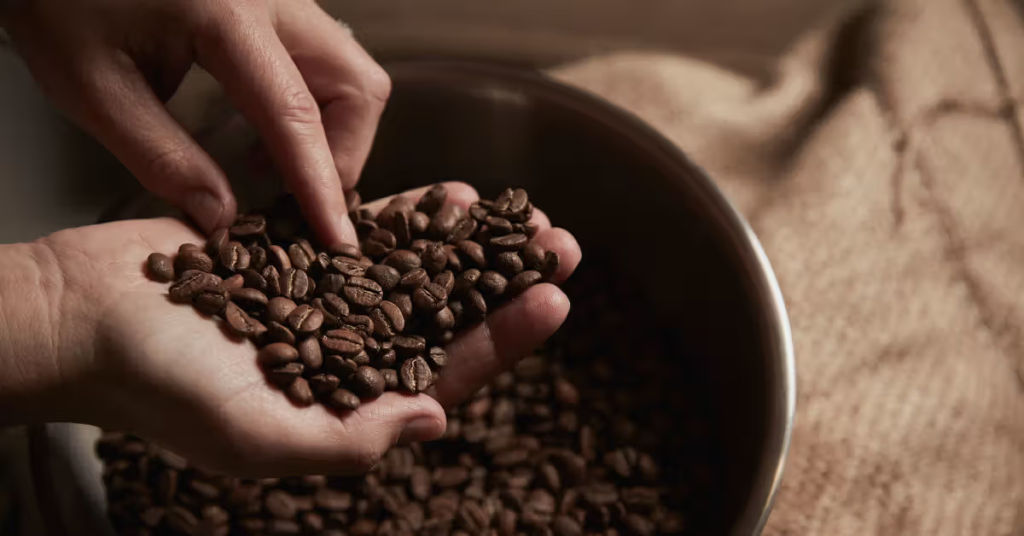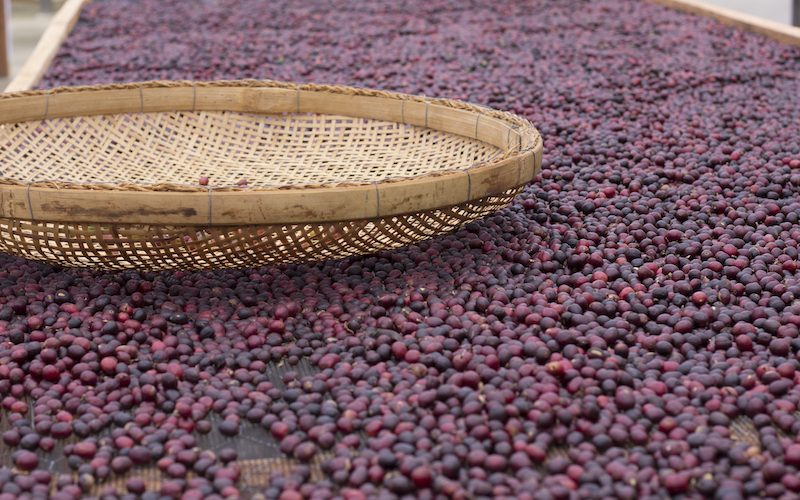Give lady Your favourite kaapis aren’t your favourite for no reason.
They’ve been harvested, processed, and offered to you with a lot of thought behind what each step means for the taste of your kaapi.
Dry processing is one such technique that coffee producers around the world use to process their coffee beans. They know what beans work best with dry processing, just like we know that our Mysore nuggets coffee tastes wonderful because of the monsooning process.
Understanding the Process

In dry processing, coffee beans that are picked from the farm are placed out in the open to dry under the sun for a long period of time. This is usually done in regions where the climate is adequately warm enough to dry the fruit without damaging the coffee bean.
The process is significantly different from wet processing because it usually requires more hands on deck and also the coffee cherry is not separated from the bean at the initial stage.
Even the drying process requires significant care as the producers have to regularly toss and move around the cherries that are left out to dry so that they are evenly dry and no mould develops on them.
After this, the cherries are put through a mechanical hulling machine to separate the bean and the flesh of the cherry.
The green beans are then stored away till they are shipped to coffee roasters.
Some coffee producers also use machines to dry the cherries. This is important in case there isn’t a lot of sun in that particular region.
Also known as natural processing, this method is praised for how little water it requires, i.e. in many cases, 10x less than wet processing. It can certainly be a resourceful method for coffee processing.
Dry processing is common in regions like Brazil and Ethiopia.
The Flavour Profile of Dry Processed Coffees

One aspect that is common across dry processed coffees is the fruity-sweet flavour it tends to have.
Some tasting notes you may encounter in these coffees are honey, tropical fruits, berries, etc. The coffees brewed from dry processed beans make for heavy-bodied brews with a citrus acidity.
Even if you’ve never considered knowing more about your kaapi, where it comes from, and how it was produced, we hope this post was insightful.
For your daily dose of kaapi, explore our specialty filter kaapi collection. They are sourced from India and roasted in Australia. It’s the best of both worlds, you
What is Peaberry Coffee?
Coffee cherries typically have two coffee seeds/ beans within them. In some rare cases (around 5% of all coffee cherries), only one coffee bean is formed in a cherry. This is called peaberry coffee.
Some people mistakenly believe that peaberry is a coffee variety or that it is found only in particular regions of the world. That’s not true.
A lot of misunderstandings about peaberry coffee arise because it isn’t as widely consumed due to several reasons.
This blog post will help you understand a bit more about this natural mutation of coffee seeds leading to the formation of peaberries.
How are Peaberry Coffees Identified?
From the outside, a peaberry cherry doesn’t look any different than other coffee cherries. This is often the root of the problem because it requires a great deal of attention and/ or expensive machinery to sort out the peaberry cherries after the harvesting stage.
While non-peaberry coffee beans are flat from one side, peaberry seeds are smaller and rounder in shape.
Since sorting machines can separate coffee cherries based on size and weight, they are able to separate the peaberry cherries because the seeds are denser than non-peaberry seeds.
Sometimes, relying on the machine alone may not be enough. So, many coffee producers assign people to manually sort through the cherries too.
Already, you can see how peaberry coffee requires much more resources and is not as common as other coffees.
What Does Peaberry Coffee Taste Like?

Peaberry coffees can have more heightened flavours than their counterparts. This can be chalked up to the fact that the nutrients and organic compounds that are usually present in two green beans are now infused in a single peaberry seed.
If you enjoy coffees with bright acidity, make sure to keep an eye out for peaberry coffees.
These tend to be a tad bit sweeter than non-peaberry coffee, have a lighter body, and have slightly more caffeine content.
Are Peaberry Coffees Alike?
No, peaberry coffees have just as many differences as other coffees do. A peaberry from India will be different from a peaberry grown in Africa.
Apart from the seed mutation, there isn’t really any common factor that makes two peaberry coffees from different regions similar. Sure, there could be similar tasting notes and aromas. But those result from other variables and shouldn’t be attributed to the coffee cherries having peaberry seeds.
To distinctly identify the other coffee beans in contrast to a peaberry, they are sometimes referred to as flat berries.
Moreover, the roasting process used for flat berry beans may not apply to peaberry beans. So the peaberries are often separated while roasting to ensure the roasts are even.
There is a substantial market for peaberry coffees despite the relatively steep price. After all, the heart wants what it wants.
And when you consider how rare these coffees are, it makes sense that people who genuinely enjoy the peaberry coffee flavours will most certainly stock up on it.
Have you ever considered trying peaberry coffees? If not, have we changed your mind about it?

